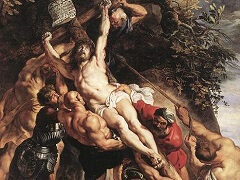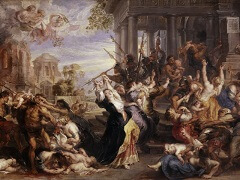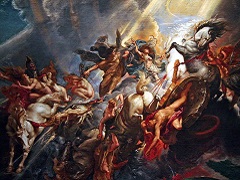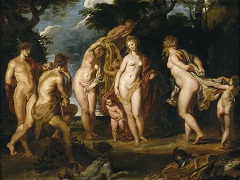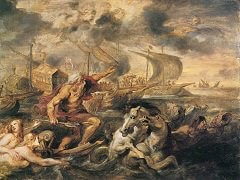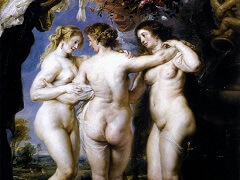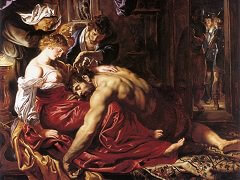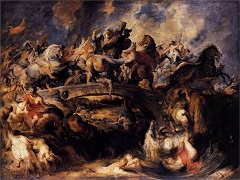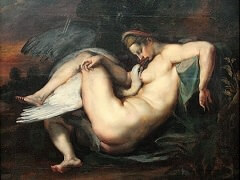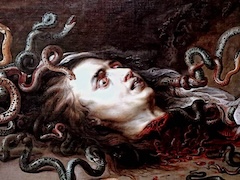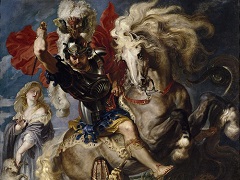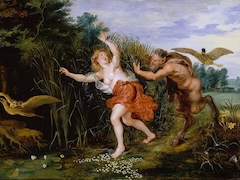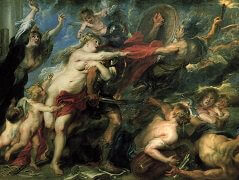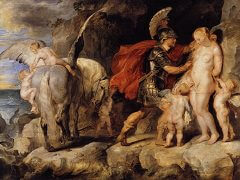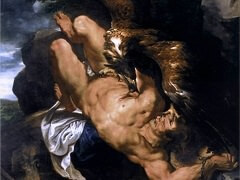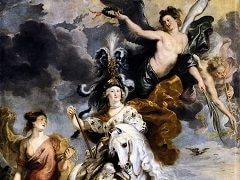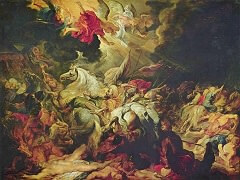The Discovery of the Child Erichthonius, 1615 by Rubens
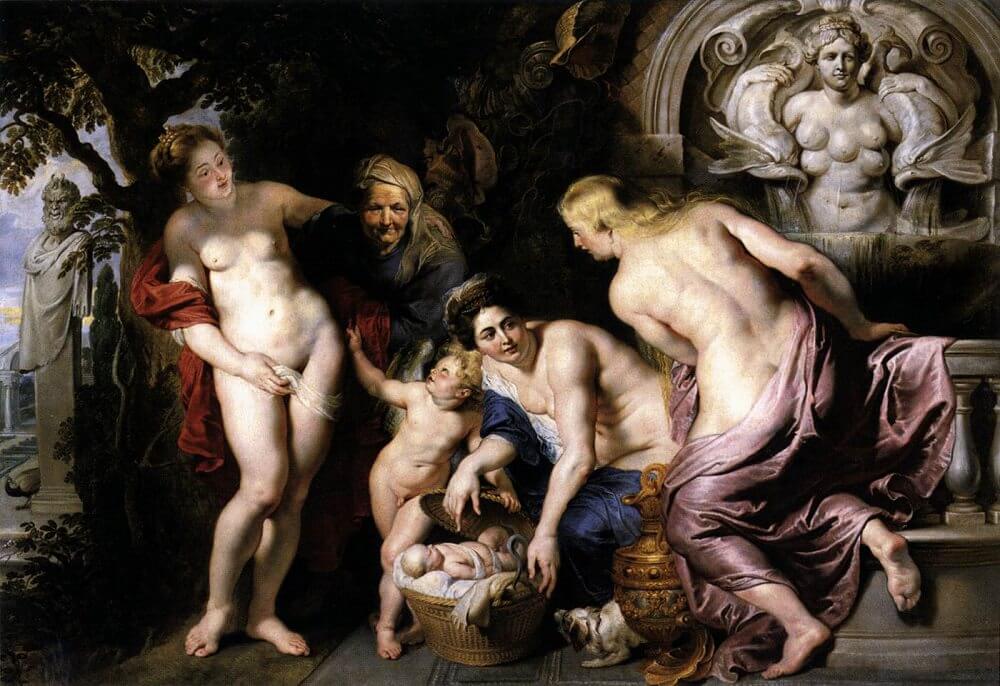
The story, depicted in the painting is part of the legendary history of Athens and it has echoes of a primitive fertility rite. It tells how Vulcan, in a clumsy attempt to ravish Minerva, accidentally let his semen spill over the ground, and Mother Earth, thus fertilized, gave birth to Erichthonius. Minerva shut the infant in a basket, which she entrusted to the three daughters of Cecrops, king of Attica, forbidding them to open it. But one of them, overcome by curiosity, did so and discovered that the child had a serpent's tail for legs (or that a serpent lay beside it). Maddened with terror the three threw themselves from the top of the Acropolis. Erichthonius, brought up by Minerva, became king of Athens.
The three sisters are depicted in the act of opening the basket, out of which a snake uncurls itself. The infant lies inside. Mother Earth is represented by a statue of Diana of Ephesus, the many-breasted goddess of fertility. The theme is most often found in 17th century Netherlandish painting.

